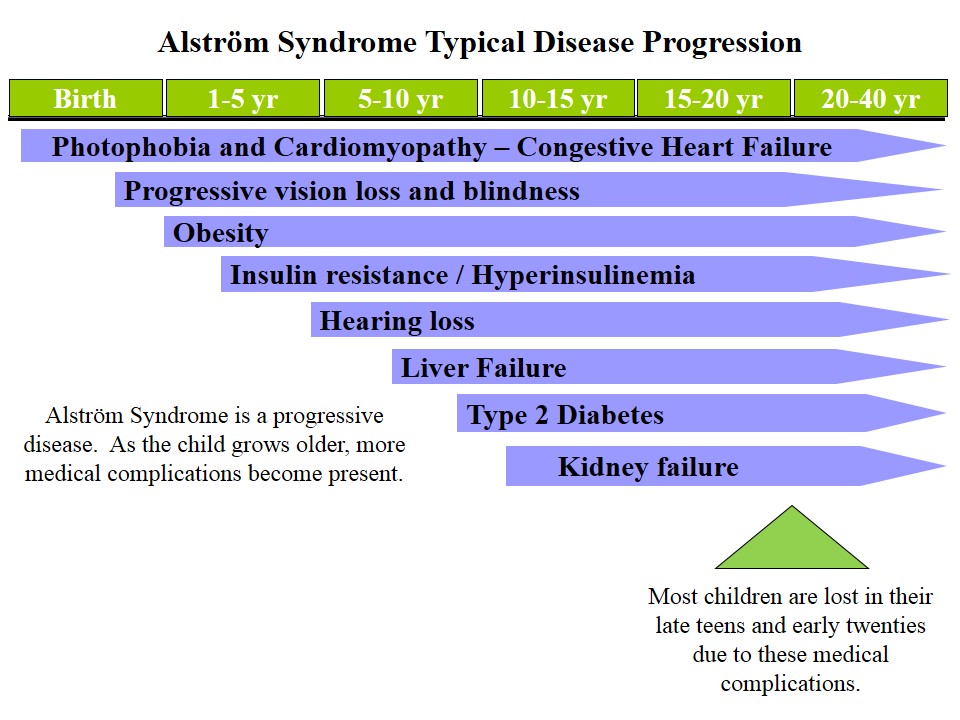What is Alström Syndrome?
About Alström Syndrome
Alström Syndrome is a rare, hereditary genetic disorder first described by doctor Carl Henry Alström in Sweden in 1959. Since that time, there have been just over 1,000 individuals diagnosed with Alström Syndrome in medical history.
Alström Syndrome can affect people of all nationalities, ethnic groups and races. It is caused by a mutated gene called ALMS1. Both parents must be a carrier of one mutated ALMS1 gene in order to have a child with the syndrome. The affected child receives a copy of the mutated gene from both parents, giving them 2 mutated ALMS1 genes, which results in the child having Alström Syndrome.
Children with Alström Syndrome will battle:
* Nystagmus (wobbly eyes) and photophobia (light sensitivity) in early infancy
* Progressive vision loss, leading to blindness in childhood
* Childhood obesity
* Mild to moderate hearing loss
* Normal intelligence—delayed developmental milestones in some
* Insulin resistance
* Type 2 diabetes
* Progressive, chronic kidney failure
* Congestive heart failure secondary to dilated cardiomyopathy
* Liver dysfunction and failure
* High cholesterol / high triglycerides
* Hypothyroidism
* Small genitalia in males; female hormonal irregularities
* Urological problems
* Frequent pulmonary infections, asthma and chronic obstructive pulmonary disease (COPD)
* Learning difficulties, possibly due to vision and hearing loss
* Scoliosis or kyphosis (curvature of the spine)
* Premature frontal balding in both girls and boys
* Seizures
Alström Syndrome is one of the most brutal diseases there is, as it touches every organ in the body. Most children are lost in their late teens and early twenties due to these medical complications.

